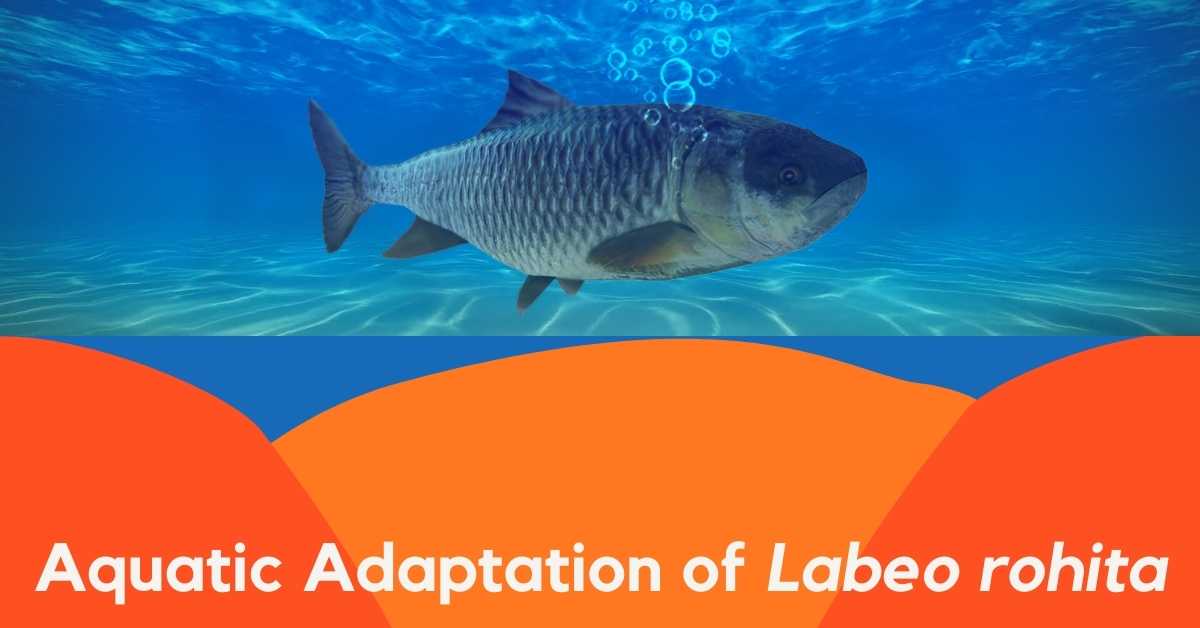Fish are the prime aquatic animals. Because only fish have evolved there in the aquatic environment with origin. The origin and development of any other vertebrate species have not been completed in the aquatic environment. Various changes have been made in the anatomical and physiological functions of fish for successful adaptation to the aquatic environment. These changes are referred to as adaptive features. Like other fish, the aquatic adaptive properties of Rohu fish (Labeo rohita) are as follows:
Body Structure
The body of the Rohu fish is long and spindle-shaped. Both ends of the body are narrow and the middle end is wide. For such a physical structure, they can easily cross the water barrier and move into the water. In addition, they have mucous-coated smooth skin which helps them an extra advantage during swimming.
Body Skin
The skin of most fish, including the Rohu fish, is thin, with mucous glands and covered by epidermal scales. Since the scales are attached to the skin, they have no problem during swimming. Besides, the mucous keeps the body skin moist protecting the fish from parasitic infections.
Fins
Like other fish, Rohu fish have different paired and unpaired fins for swimming in water. Fins contain fin rays. The dorsal and anal fins of this fish make balance the body in the water. The caudal fin changes direction while the pectoral and pelvic fins help to swim.
Respiratory Organ
Gill is the main respiratory organ of the fish. The capillary blood vessels present in the gill chamber which receive dissolved O2 from water and releases CO2. There is a lid made of bone called operculum to protect the gill chamber.
Eyes
There is one pair of eyelidless eyes of Rohu fish which is located in the middle dorsal part of the fish’s head. A transparent membrane covers the eyeball. Water cannot enter the eyes and vision is not disturbed in the water due to this transparent membrane.
Lateral Line Sense Organ
A line-like structure is present longitudinally on both sides of the body of the Rohu fish which runs from the edge of the operculum to the base of the caudal fin. It is called the lateral-line sensory organ or lateral line or lateral line system. It is a special characteristic of aquatic vertebrates. This organ helps the fish to determine the vibration, state of the water, pressure gradients, etc. in the surrounding water.
Air Bladder
The air bladder is also called swimbladder, located in the abdominal cavity of all bony fish, including Rohu fish. The fish can rise to different levels of water by increasing or decreasing the amount of gas in the air sac. The air sac also acts as an accessory respiratory organ for the fish. In addition to the above morphological features, Rohu fish has successfully adapted to water through physiological adaptation.
Economic Importance of Labeo rohita
Fish is considered one of the sources of animal protein. Carp fish have an important role in providing the demand for the human protein. Therefore, carp is cultivated on a commercial basis. Among carps, Rohu fish is more acceptable than other carp species in terms of quality and nutrition. At present, Rohu fish is cultivated in various freshwater natural sources as well as inbreeding methods in fish farms. The vast majority of the world’s population is involved in Rohu fish farming, fry production, and marketing. Rohu fish farming has been a major contributor to the socio-economic development of these communities. The remaining body parts of Rohu fish are also used as poultry feed, organic fertilizer, and fish supplements. There is a possibility of earning a lot of foreign exchange in the future if the production of Rohu fish is increased, conserved and exported.

